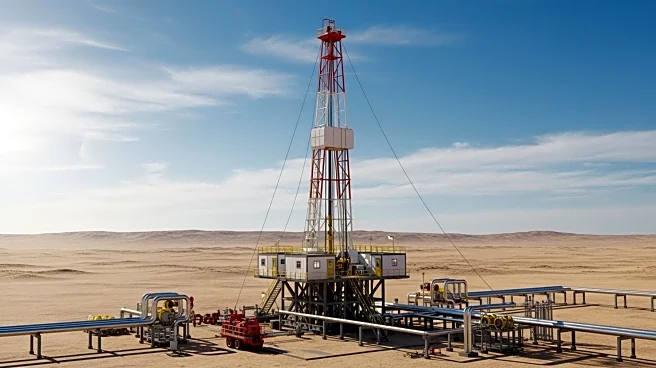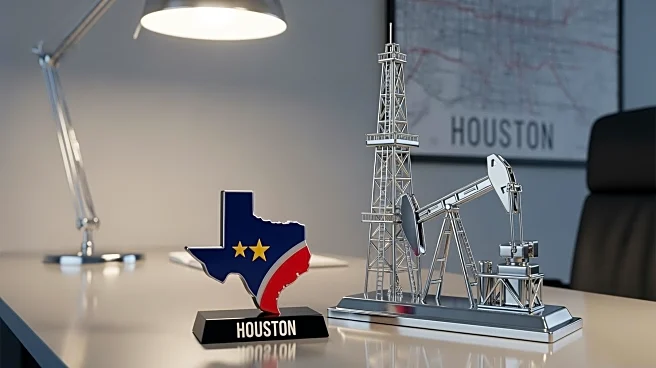What's Happening?
The U.S. upstream oil and gas sector experienced a decline in merger and acquisition (M&A) activity during the third quarter of 2025, as reported by analytics firm Enverus. The downturn in dealmaking is attributed
to persistently weak crude oil prices, which averaged around $65 per barrel from July to September. This price level is considered marginally profitable for drilling operations. In comparison, U.S. crude futures averaged $75 per barrel during the same period last year. The total value of disclosed deals in the third quarter was $9.7 billion, representing a 28% decrease from the previous quarter. This decline follows a period of significant M&A activity in the sector, which peaked in 2023 with deals totaling $192 billion. Andrew Dittmar, principal analyst at Enverus Intelligence Research, noted that the current crude prices have made it challenging for sellers, particularly private equity firms with oil-weighted assets, to find buyers.
Why It's Important?
The decline in M&A activity in the U.S. upstream oil and gas sector highlights the challenges faced by the industry due to fluctuating oil prices. Lower crude prices impact the profitability of drilling operations, making it difficult for companies to justify investments in undeveloped shale locations. This situation affects not only the oil companies but also private equity firms that hold significant oil-weighted assets. The reduced dealmaking activity could lead to a slowdown in industry consolidation, which has been a trend in recent years. Additionally, the current market conditions may deter new investments in the sector, potentially affecting future oil production and supply. The situation underscores the volatility of the oil market and its impact on strategic business decisions within the industry.
What's Next?
If oil prices remain at current levels or decline further, the U.S. upstream oil and gas sector may continue to see reduced M&A activity. Companies may need to reassess their strategies, focusing on cost-cutting measures and operational efficiencies to maintain profitability. There could also be increased pressure on private equity firms to divest oil-weighted assets at lower valuations. Industry stakeholders will likely monitor oil price trends closely, as any significant changes could influence future dealmaking and investment decisions. Additionally, there may be calls for policy interventions or incentives to support the sector during this challenging period.












